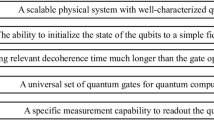Abstract
The many faceted perspectives which can be constructed with analytical chemistry as baseline, information as horizon and truth as vanishing point illustrate the diversity of our scientific work.
We will only make a major step forward after we have learned to understand the perspectives of the role of the sample as the representative of the collective which we want to investigate, as the central object of pragmatic analysis, and as the Janus-headed ‘synholon’ of matter and information.
This still somewhat unusual alter-ego point of view forces us to quantify intensive and qualify extensive parameters, e. g. in the field of pattern recognition. This view, together with a radical change away from the adaption of the sample to the method (instead of the more logical way of adaption), and the right selection of the reagent matched to the sample, will in the future change the image of analytical chemistry to that of scientific analysis.
This is an attempt to illustrate the enormous importance of analytical chemistry as scientific analysis and in the perspective of the gain of information, without including the increasing importance of analytical chemistry in society, economy and technology.
Similar content being viewed by others
References
M. Herzfeld,L. da Vinci: Der Dichter, Forscher und Poet, 3rd Ed., Eugen Diederichs Verlag, Leipzig, 1911.
C. H. Macgillavry,Symmetry Aspects of M. C. Escher's Periodic Drawings, A. Oosthoek, Utrecht, 1965.
M. Eigen, R. Winkler,Das Spiel, Piper, München-Zürich, 1975.
D. R. Hofstadter,Gödel, Escher, Bach: An Eternal Golden Braid, Penguin Books, New York, 1982.
J. Brandmüller, Zum Symmetriebegriff und seiner Bedeutung für Naturwissenschaft und Kunst. In:Symmetrie (A. Preisinger, ed.), Schriftenreihe der TU Wien, Bd. 16, TU Wien, 1980.
C. F. v. Weizsäcker,Die Einheit der Natur, Hauser, München, 1971.
Platon,Der Staat, Goldmann, München, Band 75/6 (deutsche Übersetzung: F. Schleiermacher).
L. Wittgenstein,Tractatus logico-philosophicus, 12th Ed., Suhrkamp, Frankfurt/Main, 1977.
P. Feyerabend,Wider den Methodenzwang, Suhrkamp, Frankfurt/Main, 1976.
G. Bachelard,Die Bildung des wissenschaftlichen Geistes, 2nd Ed., Suhrkamp, Frankfurt/Main, 1984.
P. Watzlawick (ed.),Die erfundene Wirklichkeit, Piper, München-Zürich, 1981.
J. Huxley,Religion und Philosophie, Buch und Welt, Klagenfurt, 1972.
P. Lorenzen,Konstruktive Wissenschaftstheorie, Suhrkamp, Frankfurt/Main, 1974.
K. R. Popper,Logik der Forschung, 8th Ed., Mohr (Paul Siebeck), Tübingen, 1984.
J. Peters,Einführung in die allgemeine Informationstheorie, Springer, Berlin-Heidelberg-New York, 1967.
L. de Meyer,Ber. Eunsen-Ges. 1976,80, 1189.
H. Malissa,Anal. Chim. Acta 1978,100, 5–13.
Author information
Authors and Affiliations
Additional information
Dedicated to you, dear Karl (Winsauer), on the occasion of your 60th birthday in recognition of your pioneering contribution to the consolidation of analytical chemistry.
Rights and permissions
About this article
Cite this article
Malissa, H. Analytical chemistry—seen in perspective. Mikrochim Acta 88, 371–386 (1986). https://doi.org/10.1007/BF01206731
Received:
Revised:
Issue Date:
DOI: https://doi.org/10.1007/BF01206731




